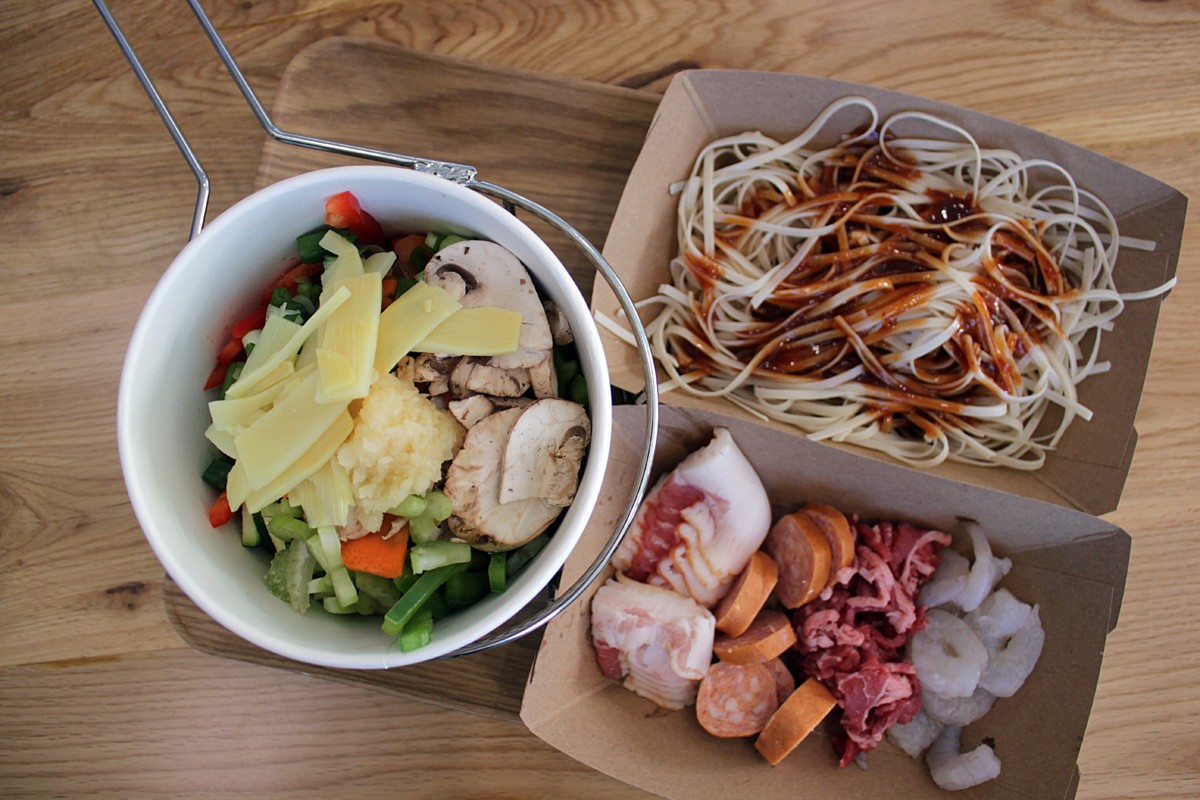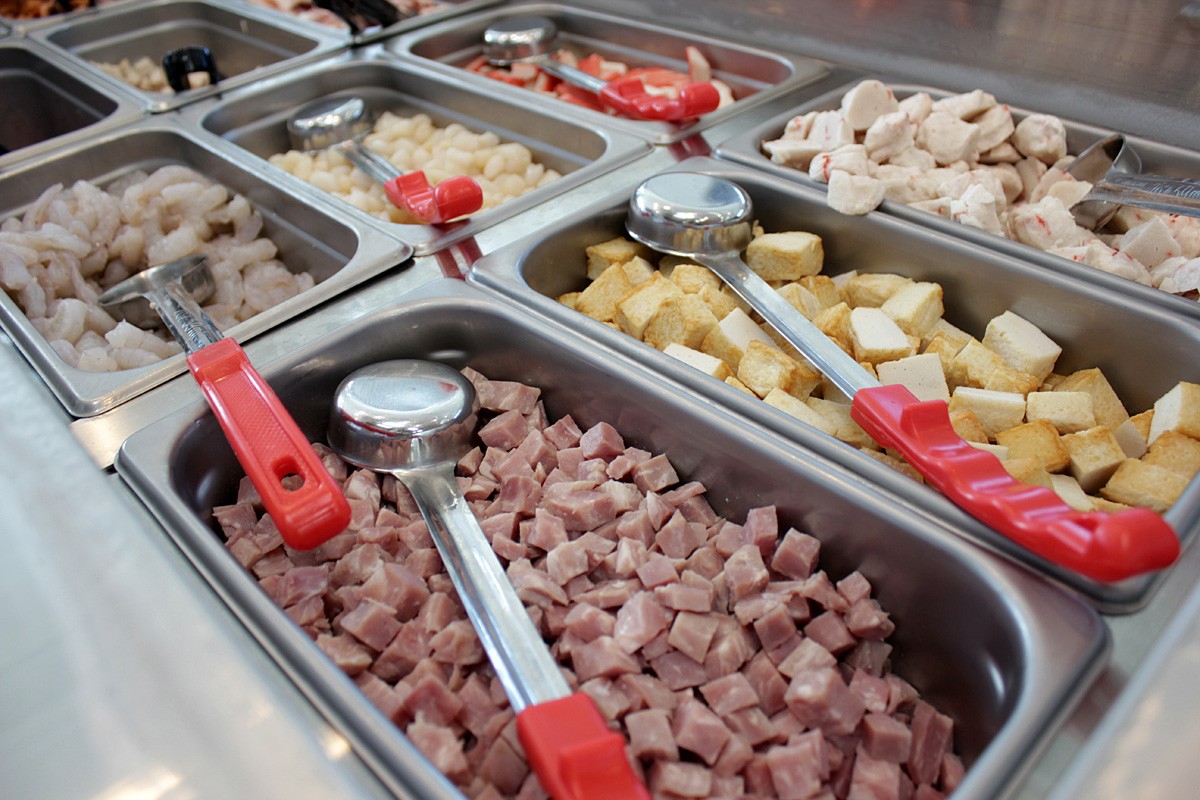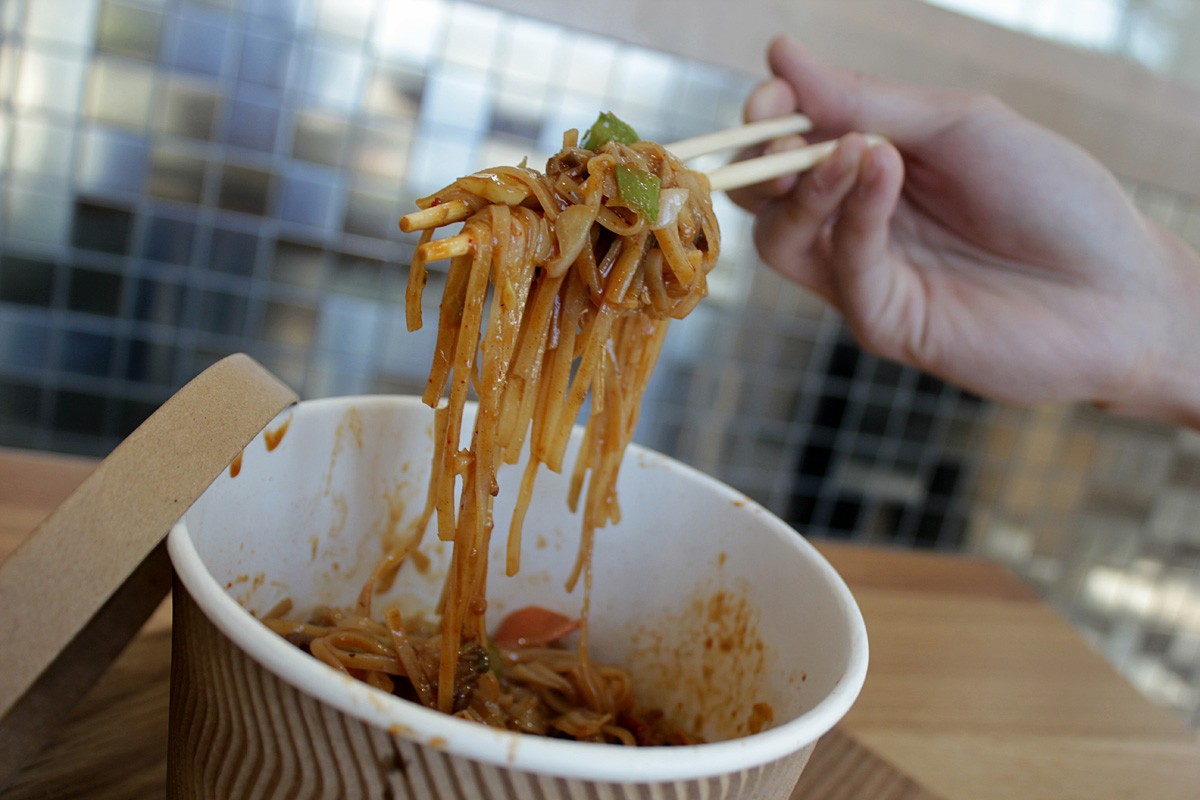
There’s a running joke in the 1993 Sylvester Stallone sci-fi flick Demolition Man that all restaurants in its dystopian future are Taco Bells. The movie is set in 2032, just 15 years from now, and if the current state of our dystopia is any indication, all restaurants are actually going to be Chipotles. Or at least they’re going to be copies of Chipotle, where you line up single-file behind a glass partition and direct a uniformed teenager in building a meal from components. Whether it’s pizza, poke, Mediterranean or Asian street food, no modern fast-casual restaurant is anything these days if it doesn’t give you the illusion you are in control.
To this list, we now add Mongolian barbecue, which, for the record, I never thought needed the treatment. Most old-school Mongolian barbecues are already build-your-own concepts using the now-quaint Vegas-style buffet line—and I liked going to them. Though there’s never been more than a sneeze guard protecting the raw ingredients from the unwashed public, I’ve always relished being able to take as much as I want of whatever I want.

At the new Whealthy, raw meats and vegetables are placed safely behind the counter, protected from the proletariat. I did, however, still have a say in what vegetables I wanted and how much. As I pointed at the zucchini, carrots, mushrooms and onions, a teenaged employee layered each into a paper bowl.
As I moved on to the protein station, the employee readied a separate paper plate in anticipation of the meats I was about to choose. And there were a lot of choices—more than I’ve ever seen at a traditional Mongolian barbecue: cubed ham, scored squid, tofu, colorful fish balls, tiny scallops, raw shrimp, two kinds of sausage, bacon, precooked chicken and thinly sliced beef. Surveying the dizzying array, I asked, “How many meats do I get?”
“Two, but you can add another for $1 more,” the employee answered.
I chose beef and scallops, but as she carefully arranged them on the plate so that each took up exactly half the space, I realized I also wanted shrimp. “You know, I’ll do the $1 upgrade,” I told her. “Let’s add some shrimp.”
She nodded, but then, rather than just adding them, she subtracted a few ounces of beef from the plate to make room. It was at that point that another employee informed me the shrimp wasn’t $1; it was actually $1.50. Since there were people behind me, I didn’t raise a fuss. But as my tray was moved to the next station, I quietly sulked.

From the starches—which included rice, spaghetti, udon and rice cake—I chose ramen noodles. Then, it was off to the sauces. I tasted three samples out of the seven, ranging from black soybean to tomato cream. And after opting for a combo of the herb chile and the spicy soy, I saw that the latter contained “sodium glutamate,” a.k.a. MSG, with which I have no qualms but I mention here in case you do. Each sauce was applied by squirt bottle to the pile of noodles.
Next, I paid at one of those point-of-sale tablets that always try to guilt you into leaving a tip. As I found a seat in the sterile dining room, the food was brought to the novel cooking vessels that are what ultimately set Whealthy apart from a prototypical Mongolian barbecue. Admittedly, they’re what made me interested in the place to begin with. Tilted at 45-degree angles like mini cannons, these cast-iron pots are cradled in a motorized contraption that heats them and rotates them around an axis as if they were cement mixers.
The theory is that when the food tumbles inside it as though socks on the spin cycle, each piece is stir-fried and seared evenly against the sides. Videos of the process at the Hollywood branch of Whealthy show fires erupting from the pots. But here, in the leafy suburbia of Ladera Ranch, there was no fire. Instead, there were wisps of steam.

When I tried the finished product, it tasted predictably like a stir-fry made in a wok that wasn’t hot enough. The noodles were soggy, the beef stringy and the shrimp slightly undercooked. And despite the two sauces I chose, it was also kind of bland. But what it lacked in flavor, it made up in bulk. There was enough food to last me two more meals. And for some reason, the noodles tasted better as leftovers the next day. So I guess if this is our future, it’s not so bad. Besides, have you ever had Taco Bell food the day after?
Whealthy, 27412 Antonio Pkwy., Ste. R6, Ladera Ranch, (949) 468-8089; whealthyrestaurant.com. Open daily, 11 a.m.-8:30 p.m. Bowls, $11.50. No alcohol.
Before becoming an award-winning restaurant critic for OC Weekly in 2007, Edwin Goei went by the alias “elmomonster” on his blog Monster Munching, in which he once wrote a whole review in haiku.

